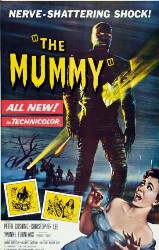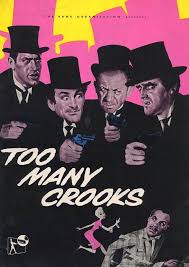Graduate student Shirô is a passenger in a car driven by his wild and apparently supernatural “friend” Tamura when it hits and kills a local thug. Tamura doesn’t care but Shirô gets very upset. Eventually Shirô decides to turn himself in to the police, but the taxi crashes on route (most likely due to Tamura’s influence), killing Yukiko, his fiancée. This drives her mother insane. Shirô is later picked up by an addict who happens to have been the victim’s girl friend. She and the victim’s mother plan to get revenge, but Shirô leaves town at that point to visit his dying mother. Shirô’s father runs a horrible old-folks home and keeps a mistress in the house. The doctor lets people die, the policeman is carrying out blackmail, and except for one woman who is the spitting image of Yukiko, everyone in town is terrible. And it would be a spoiler except it is the entire point: Everyone dies, most in improbable ways, and goes to Hell.
Jigoku is an odd picture—an art house horror flick where the small budget from a dying studio is as responsible for the look as any creative desires. The first two thirds are grim, slow, and spartan. There’s very little light and the sets look like sets. While cost is obviously the reason, one can attempt to explain away the problems by claiming we’re already in Hell, just an outer circle where sins are remembered. That or just shrug and figure they ran out of money.
The final third—in Hell—looks a lot more interesting, though it is just as austere. With strange angles, colored filters, and a lot of gore, the afterlife is an imaginative dream world. And it is that look, the blood, and the screams that made Jigoku a cult hit. Many in Japan think of it as the beginning of modern J-horror, something that is a bit hard to fathom when watching.
Though Jigoku has an interesting aesthetic in its final section, over all there’s not much there. The plot doesn’t hold together, which isn’t a problem in a film which is essentially just some sins and some torture, but then it needs something in its place. Theme doesn’t do the trick as while Jigoku presents sin and guilt, it doesn’t have anything to say about them. The characters are one note sinners, except for Shirô who is too passive to be of any interest. Which leaves you with the film’s selling point: shock. For 1960 Japan, this was considered very edgy, with bodies being sawn in half and people being “flayed.” But it isn’t shocking now. Jigoku is worth a quick look for the tableaus of Hell, but nothing more.











